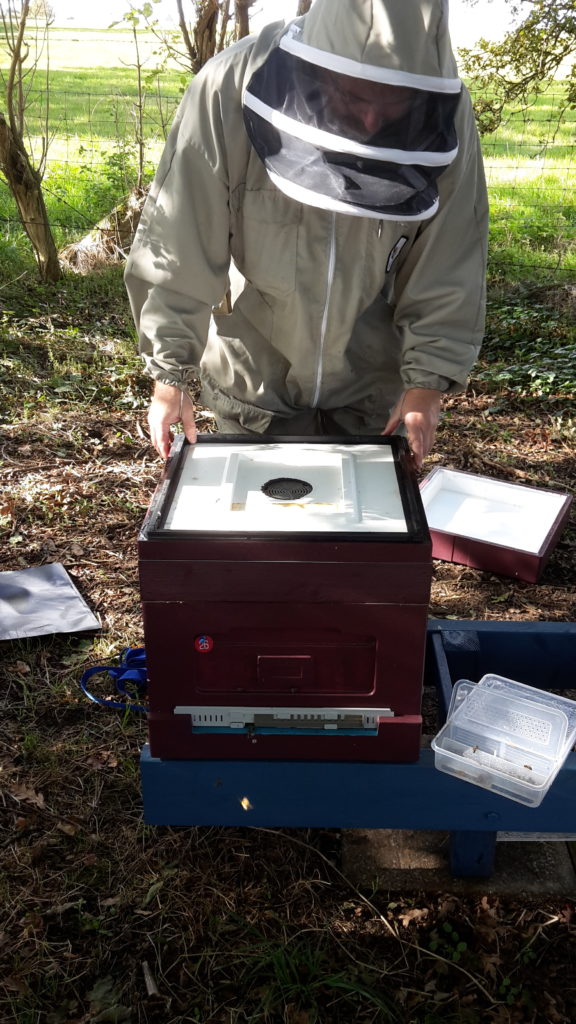Over the last month we’ve moved into winter preparation mode. As the weather turns the bees find less forage with Ivy being the biggest source in this area. As a consequence we have to check that each hive is strong enough in two areas.
Bees.
You might not know but the bees that live through the winter are very different from summer bees. They have to live longer for a start as the queen lays less eggs so less new bees are born. They also have to be able to survive the cold weather and to do this they have special fat bodies to store more food and generate more heat than usual.
Food.
As its too cold for the bees to fly they have to rely on the food they have collected. It takes a lot of food to keep warm so a hive needs approximately 20kgs of food to survive a winter.
As in everything beekeeping there are lots of different ideas on how best to prepare bees for winter. We follow the same process every year and have never lost more than a hive a year.
We start by weighing each side of the hive using luggage scales. This tells us the starting weight to allow us to track the weight loss through the winter and provide extra feed if required.
We weigh both sides and add the weight together to get the full weight. Its surprising how the way the bees position and store the honey can make one side of the hive a lot heavier than the other.
Our scales have a second needle that shows the max weight measured so we don’t have to look at the dial while weighing.
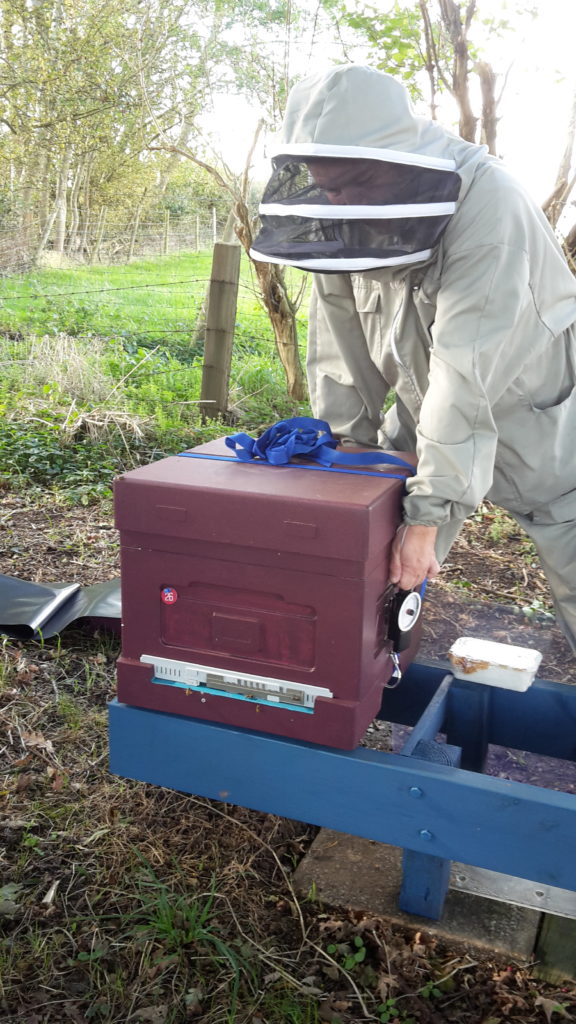
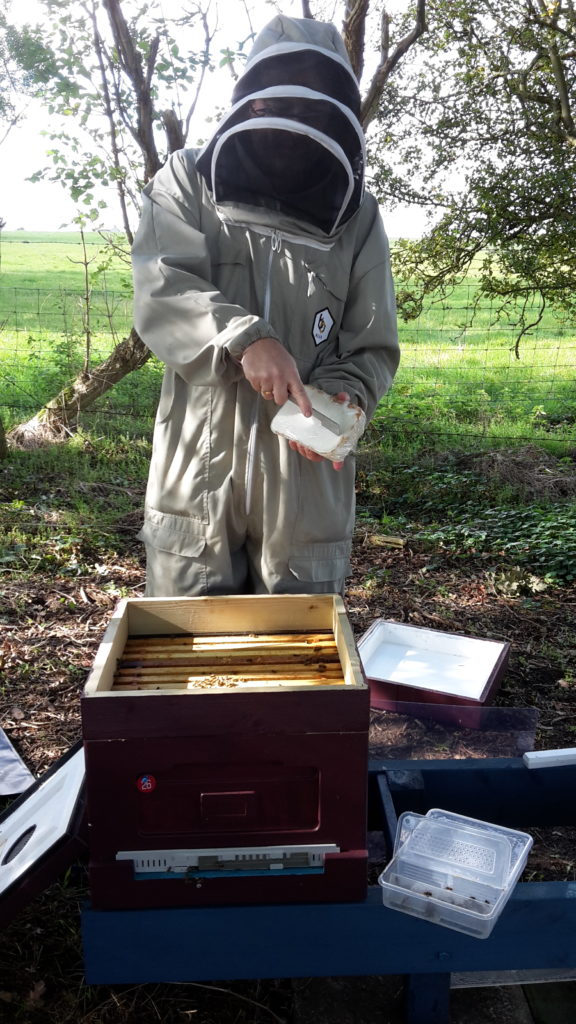
After taking off the crown board we place an Eke on top of the brood box. An Eke is just a small frame that gives us space to fit a tub of icing fondant below the roof. We buy normal baking fondant, put it in a small plastic tub and wrap in cling film. The cling film stops the fondant melting out of the tub and covering the bees below which is bad news. You can see we score the film with our hive tool so the bees can get to the fondant.
We then put the tub directly above the bees. This is so it is as close as possible to the bees. When the weather gets really cold the bees can actually die of starvation even when surrounded by food as they cant move to where the food is. By putting it above them and across the frames they can always be in direct contact with the fondant and so are less likely to starve.
We’ve also removed the queen excluder. This is so that the queen can move with the rest of the bees and so stay in the warm cluster. If the excluder is left in she can get trapped below it and freeze to death while the rest of the bees are toasty above.
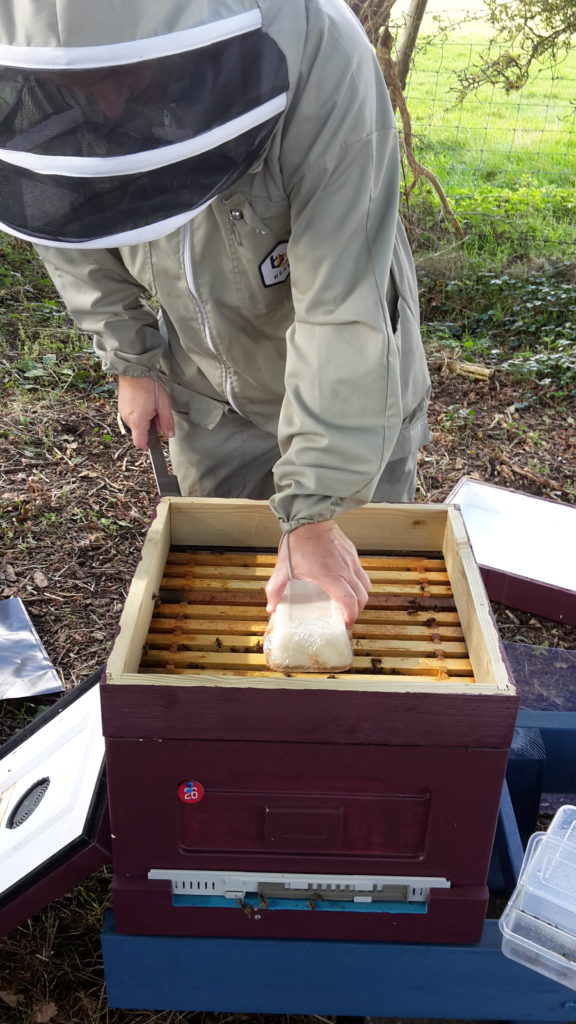
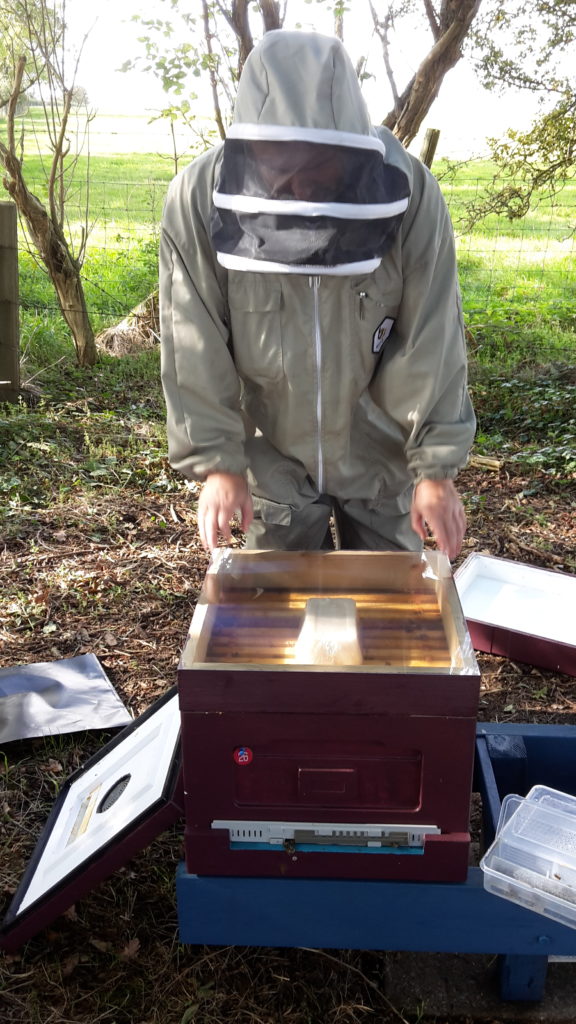
The final step is to place a clear Perspex sheet above the Eke. This allows us to look at what’s happening in the hive during the cold winter days without opening them up. We can see if the fondant needs replacing and whether there are still lots of bees in a healthy condition.
Finally, on our Abelo hives, we have to put the solid cover board back on to allow the roof to fit properly. We think this will be a problem as it may stick to the clear Perspex and lift it as well when we take a peek in the coming months. Hopefully not but we shall see.
